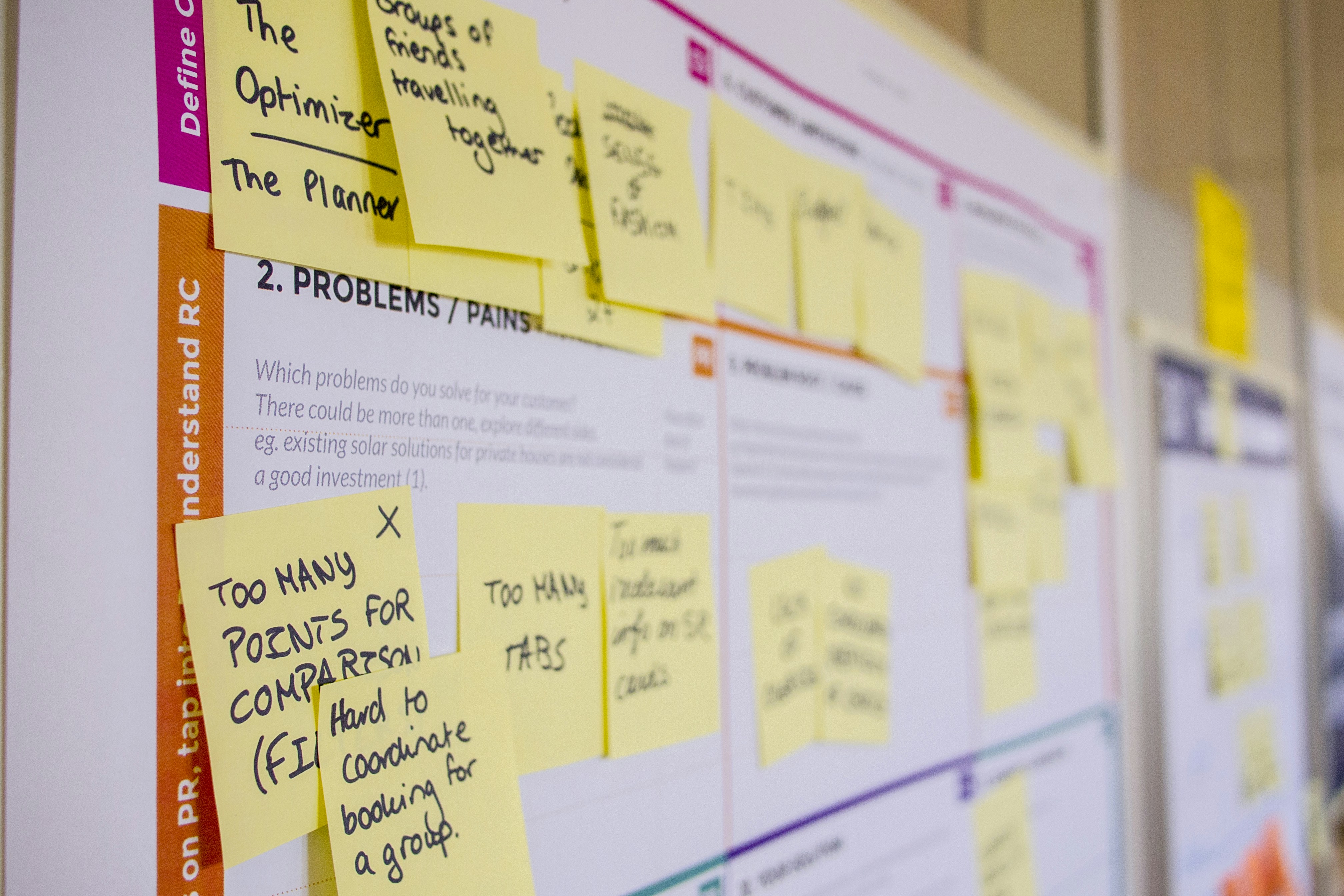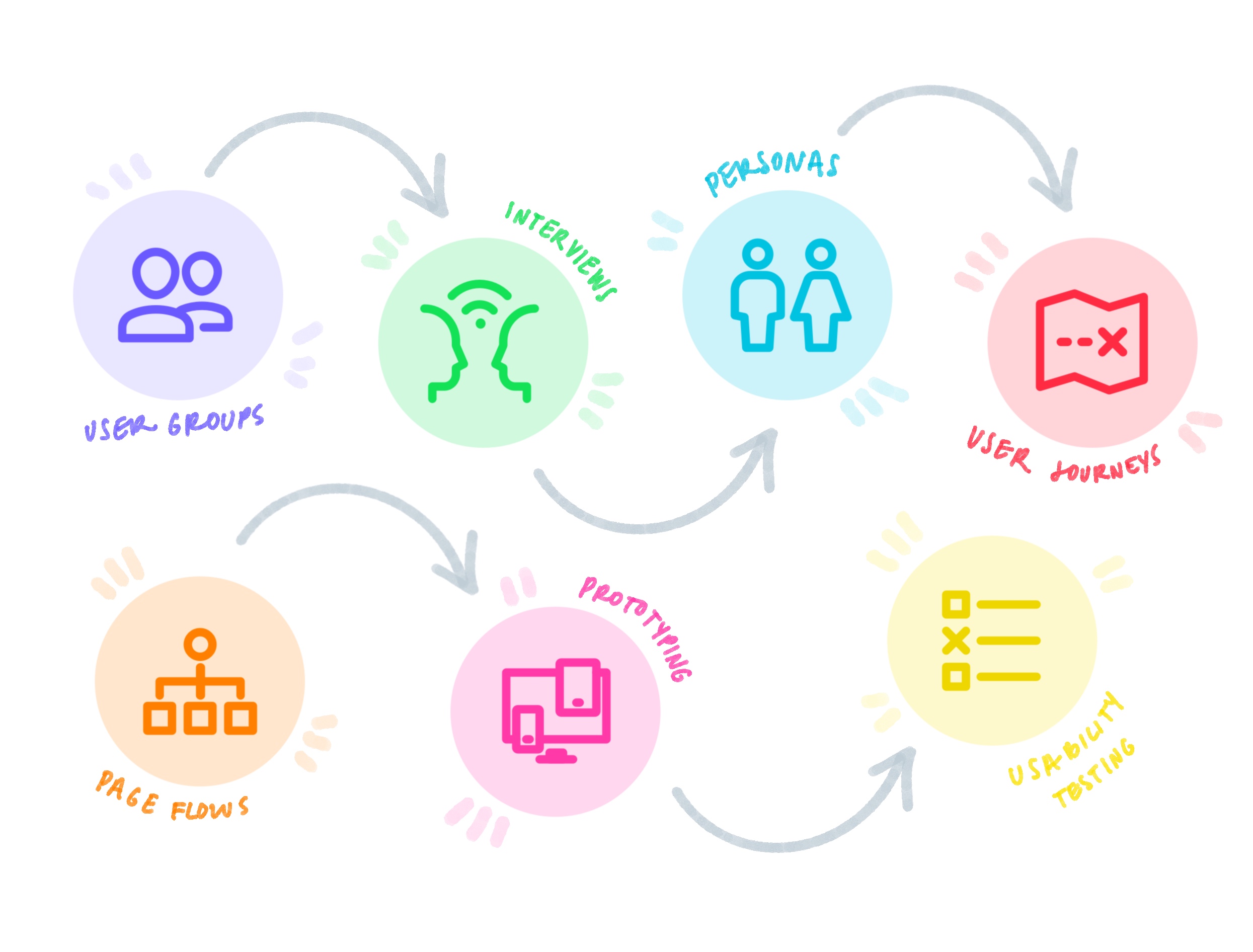A Product Manager (PM) is responsible for harmonising UX, Tech and Business requirements. While ideas are valuable, executing them is difficult - this is where Product Managers, UX Designers, and Engineers excel. Although Developers bring their own set of skills to this trio, today we will be exploring the relationship between UX Designers and Product Managers. UX Designers have many definitions in companies - some may be full-stack designers focusing on User Research, UX, and UI, while others specialise in one discipline. For the sake of clarity in this blog, I've categorised them into specialist areas, avoiding delving into design nuances.
Assessing the problem and strategy
Project Managers take a holistic view of the product, considering multiple aspects that contribute to its success. They formulate hypotheses for potential problems or opportunities and begin prioritising based on the problem's severity, new technology or a business's current requirements as a few examples. Product Managers may lean on a User Researcher at this early stage when prioritising potential issues or avenues to explore through secondary research, an analytics overview or competitor analysis. This duo can quickly prioritise and get the answers they need to start a project!
Discovery
Once a project has been identified, a discovery phase is typically initiated to validate or invalidate hypotheses, learn more about users and scope out the opportunity or problem space. It's ideal to involve a skilled User Researcher during this phase. A User Researcher excels in formulating research questions and executing a plan to define the problem accurately, gather insights and analyse the data. User Researchers have the expertise to select the appropriate research method based on their objectives and are skilled at mitigating biases. This collaborative approach ensures the project begins on a solid foundation, fostering a learning mindset within the established boundaries of business requirements.
Collective ideation
During the ideation phase, collaboration between the UX team and Project Manager needs to be closely aligned for success. It's important that this collaboration isn't top-down but involves individuals who grasp the product intricacies. Designers are skilled at translating research findings into actionable outcomes and this is fundamental for success. Conducting workshops proves effective in conveying essential research findings, identifying needs, and brainstorming potential opportunities collectively. This mutual understanding of the problem and its solution empowers User Researchers, UX/UI Designers to align with the project's strategic goals and transform them into tangible outcomes.

Testing and iteration
Once ideas are selected and low-fidelity prototypes are created, testing is crucial to assess if the proposed designs solve user problems and meet user needs. This can be an assessment of new value propositions, the usability of the system, or ways to understand behavioural insights. UX Designers will iterate their designs based on the findings and handover to UI designers. Iterating on these prototypes can help product managers assess testing outcomes against the success criteria set out in their strategy. This way of working reduces risk early before costly development work is implemented.
Measuring engagement
Measurement is essential for gauging the impact of design initiatives and tracking progress toward business goals. User Researchers and Product Managers can collaborate to define key performance indicators (KPIs) that highlight the product's effectiveness. Whether assessing user satisfaction, retention rates, or revenue generation, quantifiable metrics offer insights into product performance and inform iterative improvements over time.
In summary
In the dynamic landscape of product development, collaboration is paramount. Multidisciplinary teams, comprising diverse skill sets and perspectives, drive innovation and product excellence. When UX designers and PMs collaborate effectively, leveraging the expertise of cross-functional teams, they unlock the full potential of their projects. By embracing a user-centric approach and prioritising strategic alignment, they pave the way for impactful and successful products that resonate with users and drive business success.




